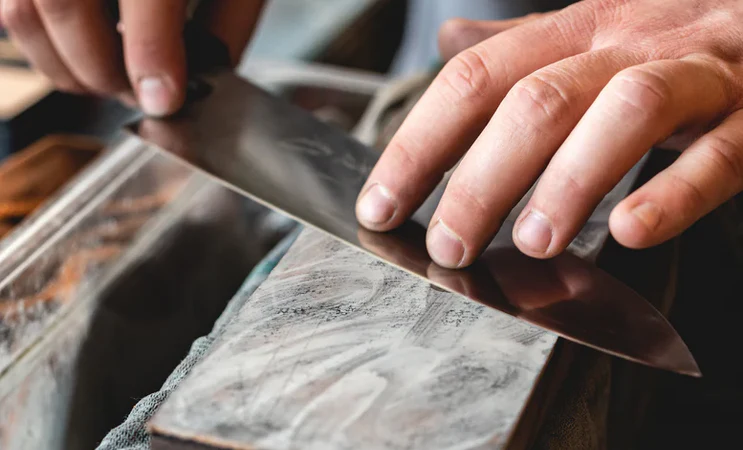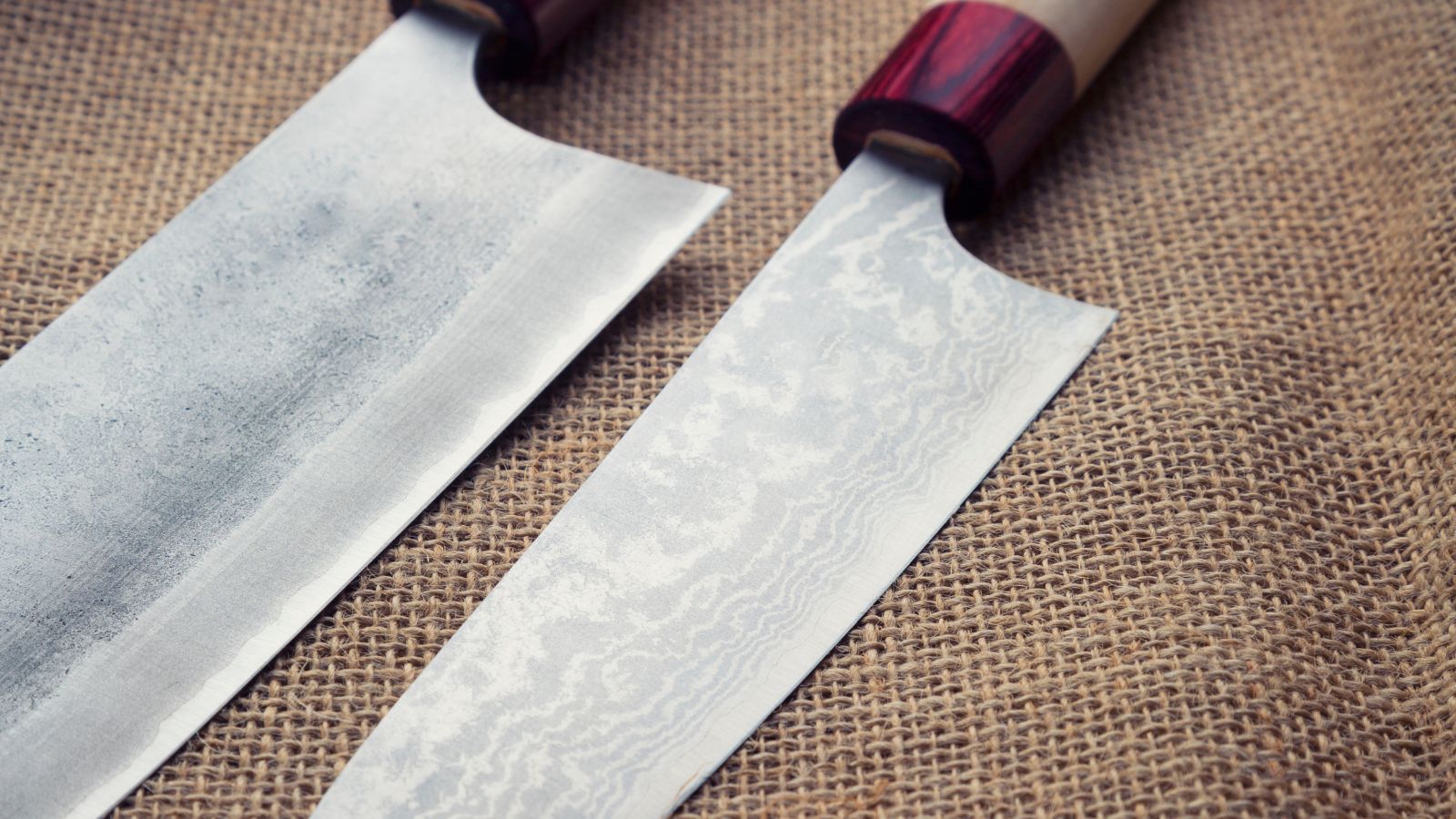
Japanese kitchen knives are renowned worldwide for their razor-sharp edges, exquisite aesthetics, and exceptional precision in slicing. However, sustaining that legendary edge requires more than a quick swipe of a steel; it requires dedication, care, and respect for the historical Japanese tradition of knife craftsmanship. In this guide, you will learn about proper cleaning, sharpening, storage, and handling to maintain your Japanese blades as family kitchen warriors for a lifetime.
Your Guide To Proper Knife Cleaning:
1. The Cleaning Ritual: Preserve the Edge, Protect the Steel
Immediately wash and dry. There’s no safe time to leave moisture on the knife blade; wipe it with a soft cloth immediately after use. This minimizes the chances of rust or corrosion, especially for carbon steel edges.
Never put your knives in the dishwasher. Heat, detergents, and rough handling can cause the varnish on handles to wear off and dull the edge of the blade.
If you have tough stains, especially near the heel or edge, dampen a microfiber cloth with a drop of mild detergent and perform a quick spot cleaning. Then, dry it very well.
2. Sharpening: Honing Tradition with Water Stones
- Employ the correct grits in proper order—using a coarse stone to reset the edge, followed by mediums to refine the edge, and ending with fine or ultra-fine stones to polish.
- Use the correct angle—most gyuto knives or santoku knives will sit at an angle of around 15–18°, depending on the type of carbon used. Repeatable consistency is the goal.
- Keep stones flat as often as possible to ensure even wear and contact; unevenly worn stones can create hollow edges.
- Keep your edge regularly sharpened—home cooks can generally go six months without sharpening; if you frequently cook a few times a week, consider sharpening every three months.
Performing a honing as your edge gets dull in between full sharpening allows your knives to become razor sharp.
3. Storing Smart: Safeguard the Blade
Wooden sheaths (saya) protect your blades and prevent unintentional nicks. Magnetic racks provide visibility and accessibility to your blades, but they must be of high quality and well-padded to protect the edge of the blade. Knife rolls offer numerous storage and travel options, but always use your sheaths to protect your blade and separate your knives, ensuring that neither the blade nor the protective sheath fabric is damaged.
4. Cutting Right: The Technique That Extends Edge Life
Use wood or plastic cutting boards—never glass or stone cutting boards—they’ll make your chips and dull your blades.
Learn the “pull-cut” or “push-cut”. …to slice softly through food, avoiding the downward pressure. This way, we will have a cleaner cut.
Also, rotate the blade and take the edge back to its home position before cutting again, which reduces damage and ensures more even wear.
5. Why Sharpness Matters: The Science Behind the Slice
Sharper knives aren’t just easier to use—they’re safer. A finely honed edge requires less pressure, minimizing slips and accidents. It delivers cleaner, more precise cuts, preserving the integrity of ingredients, especially delicate herbs, soft fish, or ripe produce. With a keen edge, you get control, speed, and a smoother cooking experience every time.
6. Specialty Stones & Tools: Invest in Precision
Take time to choose your sharpening stones wisely. A course 400 grit stone will put a new edge on your bevels and restoration work; a 1000-3000 grit stone will refine it; then an 8000+ grit stone will produce a polished surface and a refined slicing instrument. Every time you finish sharpening, you can use a leather strop to remove micro-burrs and achieve a sharp shaving edge on the blade — this is ideal after every sharpening session.
Callipers or angle templates help maintain a constant edge angle while sharpening, allowing the knife to wear evenly and retain its edge for a more extended period.
Honing Tradition with Expertise in Montreal
If you are ever in Montréal or the surrounding area, be sure to check Stay Sharp, an excellent resource for Japanese knife enthusiasts. Located in the heart of the Plateau Mont-Royal, it is the only boutique offering the largest selection of Japanese kitchen knives in the area, with in-house water-stone sharpening using traditional methods that depend on the steel and profile of the blade.
Our turnaround is quick and precise, typically 24–72 working hours. You can send your knives by mail if you are outside Canada. Whether you are purchasing a new gyuto, santoku, or yanagiba, or you just need to restore your edge to a mirror finish, we combine ancient knowledge with skilled service to keep your blades performing at their best.
Conclusion
If you treat your Japanese knives with respect, they will become timeless tools, providing performance, beauty, and pleasure in the kitchen that can’t be matched. Gently clean them, sharpen them concisely, and carefully store them, and you’ll be slicing like an expert for years, not months. Just as your skills, their edge is only as permanent as the practices you create around it.
Are you looking to elevate your knife care? Can you share what sharpening practice has made the most significant difference to your cooking experience?

